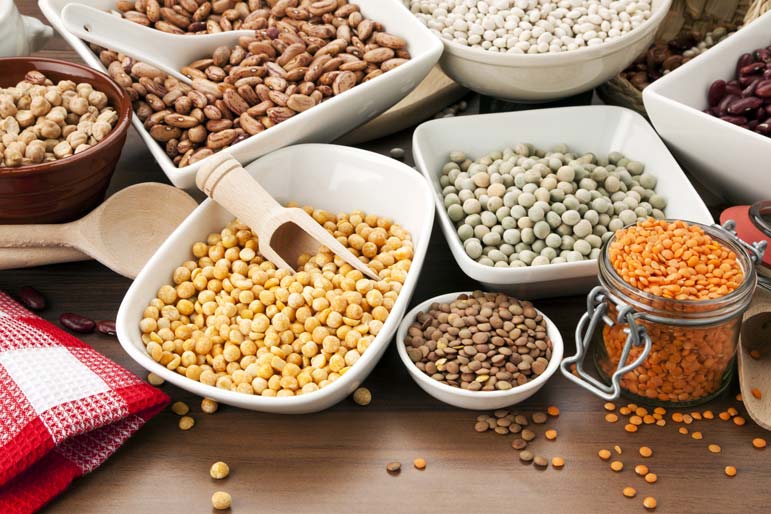
Evidence supporting the fighting power of pulses is stronger than ever. Pulses are an excellent source of fiber and plant-based protein and deliver folate, magnesium, iron and other important vitamins and minerals. Dried beans, peas and lentils have a low carbon footprint making them an eco-friendly food choice.
The health benefits of pulses
Mounting evidence suggests that pulses can play a role in preventing chronic diseases. Some of the most compelling research surrounds their role in lowering blood sugar levels. Due to several factors, including the presence of resistant starch, fiber and protein, pulses may help slow digestion and reduce after-meal glucose and insulin spikes, which can help with blood sugar control. "When it comes to lowering blood glucose levels, pulses have shown a reduction in hemoglobin A1C [a blood glucose marker] that is quite strong, to even rival what we see in blood sugar-lowering drugs," says
Pulses may help decrease LDL ("bad") cholesterol, which can help reduce heart disease risk, according to a review in the
In addition to the many benefits for the body,
Pulse perceptions
Though the benefits are undeniable, pulses aren't always top of mind. Concerns about gas and bloating, lengthy cook times, and a general lack of culinary inspiration often cloud the way. Needless to say, you might need a little help bringing pulses to the table.
Fitting pulses into your diet
Be open to the many pulse possibilities. There's no need to stop at black beans or chickpeas. With hundreds of varieties in the world to discover, there are bound to be a few you'll enjoy. Try adzuki beans for an Asian spin, split red lentils for a brilliant pop of color, or pigeon peas in a traditional Caribbean dish. The fact that they are inexpensive, nutritious and versatile in the kitchen makes pulses a win-win.
Top 6 strategies to boost your diet with pulses
1. Eat pulses at breakfast. Starting the day with pulses is a surefire way to get them in. A bean patty topped with an egg is a fiber- and protein-rich way to begin the day. Or you might take a cue from some Central American and European cultures by enjoying stewed beans with whole grain bread or rice as the star of the breakfast plate.
2. Spike a smoothie. Add cooked white beans, chickpeas, or whole pea flour to a smoothie. This simple addition not only adds protein, fiber and minerals, but it also lends a creamy consistency to smoothies. The key here is to use cooked beans prepared with no salt or seasonings.
3. Spread it out. Though hummus is easily the leading pulse-based spread, it's just the beginning. Blend white beans, lentils or black beans with spices, a generous squeeze of lemon or lime juice, and other vegetables, like onions, garlic or roasted eggplant for a flavorful dip or spread. Use cucumber slices, sweet bell pepper strips or carrot sticks to dip. Swap mayo for bean spread on sandwiches or let bean spread be the star of your next vegetable plate.
4. Roast them. Sheth recommends roasting chickpeas with curry powder for an Indian-spiced snack, with cumin and chili powder for a Mexican flair, or with garlic, basil and oregano for an Italian twist. Roasted chickpeas can be made ahead for a crunchy snack, or instead of croutons on salads.
5. Play with pulse flours. Use garbanzo flour 1:1 instead of all-purpose wheat flour to make thin pancakes or crepes. Add garlic or onion powder and pepper for a savory pancake to wrap around vegetables. Pulse flours are also great additions to quick bread and muffin recipes. Mix chickpea flour with a mashed banana and cinnamon for a sweet breakfast alternative to regular pancakes.
6. Add decadence without cream. Puree leftover cannellini or navy beans, pour into ice trays and store in a freezer-safe container. Later, when making recipes like soup, mashed potatoes, and sauces, add a couple of cubes of bean puree to the mix to add a luscious and creamy texture.


 Contact The Editor
Contact The Editor
 Articles By This Author
Articles By This Author
